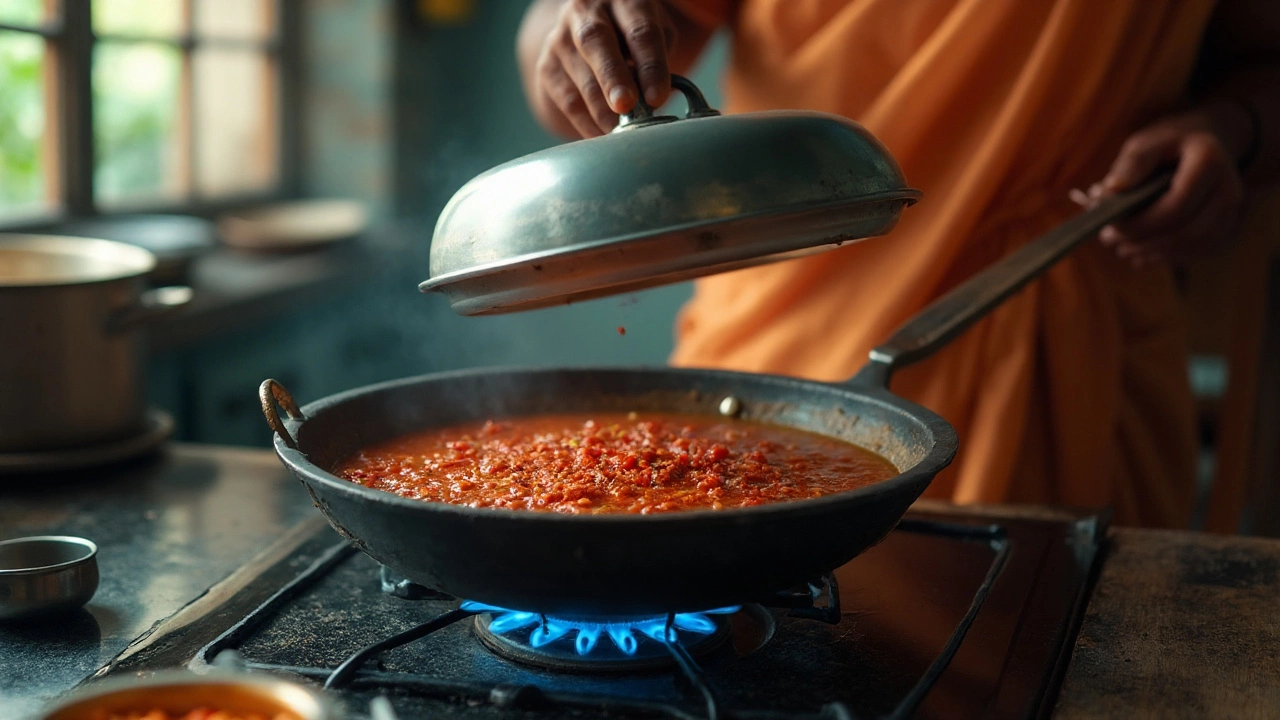Reduce Chutney: Thicker, More Flavorful Indian Condiments
When working with reduce chutney, the process of simmering chutney until it reaches a thicker, more concentrated state. Also known as chutney reduction, it helps you lock in the bright flavors of chutney, a blend of herbs, spices, fruits or vegetables used as a side dish in Indian cuisine while controlling moisture. This simple technique can turn a runny sauce into a glossy dip that clings to every bite.
Why does reduce chutney matter in the kitchen? First, the heat evaporates excess water, concentrating the natural sugars and acids so the taste becomes more vivid. Second, the longer cooking time mellows harsh spice notes, allowing spices, ground or whole flavor powerhouses like cumin, mustard seeds, and chilies to release their oils fully. The result is a balanced condiment that can stand up to bold dishes such as crispy dosa, a thin, fermented rice‑lentil crepe popular in South India without getting lost.
Key Steps and Tips for a Perfect Reduction
Start with a base chutney that’s already blended – whether it’s coconut, tomato, mint, or tamarind. Add a splash of oil (coconut or ghee work well) to prevent sticking and to enrich the mouthfeel. Bring the mixture to a gentle boil, then lower the flame and let it simmer. Stir occasionally; this prevents scorching and ensures even thickening. Watch for the texture to change from runny to syrupy – that’s the sweet spot. If you need extra tang, a dash of lemon juice at the end can brighten the flavor without re‑watering the sauce.
Temperature control is the hidden hero. Too high a heat can scorch the sugars, creating bitter notes. A medium‑low simmer keeps the reduction smooth and lets volatile compounds from the spices develop fully. For a glossy finish, finish the reduction with a teaspoon of ghee; it adds shine and a subtle buttery note that pairs nicely with fried foods.
Now that you know the why and how, you’ll notice the technique popping up across many of our posts. From tweaking batter consistency in dosa recipes to adjusting marinades for chicken, the principle of reducing liquid to intensify flavor is a common thread. Below you’ll find articles that dive deeper into related tricks – like swapping ingredients in batter, balancing spices in marinades, and choosing the right oil for crisp results. Each piece builds on the idea that controlling moisture and concentration can elevate any Indian dish.
Ready to put these tips into practice? Explore the collection below for step‑by‑step guides, substitution charts, and expert hacks that will help you master not just chutney reduction, but a whole range of flavor‑boosting techniques in Indian cooking.
Do You Cook Chutney Covered or Uncovered? Lid-On vs. Lid-Off Guide
Chutney lid on or off? Quick rules for fresh herb, coconut, tomato, and fruit chutneys. When to cover, when to vent, how to reduce, and how to avoid watery or dull chutney.
Read more